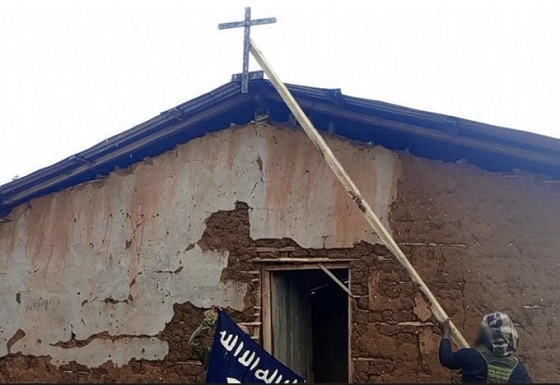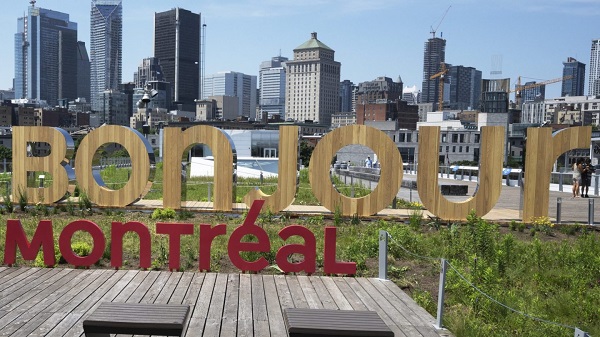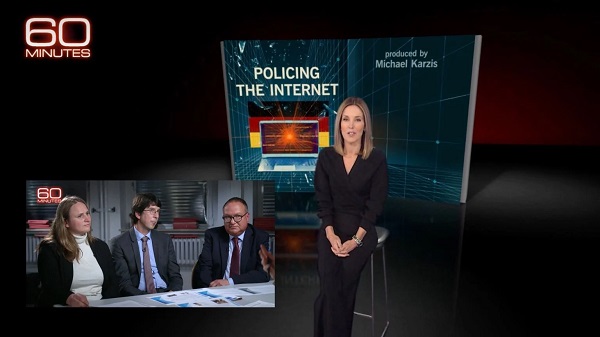Automotive
Bank of Canada holds interest rate at 1.75%; keeps eye on oil slump, investment

OTTAWA — The Bank of Canada is leaving its interest rate unchanged and says the timing of future hikes will depend on factors such as how long the oil-price slump lasts, how well business investment picks up its pace and how much room the economy still has left to grow.
The central bank’s move Wednesday maintains its trend-setting rate at 1.75 per cent. The decision follows the quarter-point increase at the bank’s previous policy meeting in October.
Thanks to the strengthened economy, the bank has been on a gradual rate-hiking path for more than a year and has already raised the benchmark five times since the summer of 2017.
The central bank raises the interest rate to prevent inflation from climbing too high. Heading into Wednesday’s announcement, many market watchers had expected governor Stephen Poloz to wait until at least January before his next rate increase.
More hikes are on the way, but the bank said the timing of its next one will hinge on changes in global trade policies as well as how higher interest rates from past increases affect consumption and housing.
The bank also underlined several recent economic developments that it will now take into account.
“The persistence of the oil-price shock, the evolution of business investment and the bank’s assessment of the economy’s capacity will also factor importantly into our decisions about the future stance of monetary policy,” the bank said Wednesday in a statement.
On oil, the central bank blamed the steep slide in prices on the combination of geopolitical developments, uncertainty about the outlook for global growth and the expansion of American shale oil production. The price of western Canadian oil, the bank added, has fallen further than other benchmarks because of transportation constraints that have led to production cuts.
“Activity in Canada’s energy sector will likely be materially weaker than expected,” the statement said.
Recent data, the bank noted, also show the economy has less momentum heading into the final quarter of 2018. It says it’s related to factors such as a drop in business investment that it largely connects to significant uncertainty around trade last summer.
The bank expects corporate investment to improve — outside the energy sector — following last week’s signing of the updated North American trade agreement, new federal tax incentives and ongoing pressure from rising demand.
It will also be watching for positive developments such as more signs the economy can still expand without stoking inflation. The bank pointed to recent downward revisions to gross domestic product data that suggested there’s still some space for non-inflationary growth.
The bank, which tries to keep inflation within its target band of one to three per cent, noted that October’s inflation reading of 2.4 per cent was above its ideal two per cent bull’s-eye. However, due to weaker gasoline prices, it is now predicting inflation to move down in the coming months by more than its previous forecast.
The Bank of Canada has estimated it will no longer need to increase the interest rate once it reaches a level of between 2.5 and 3.5 per cent, but Poloz has said this destination range remains “sufficiently uncertain” and could move up or down.
Andy Blatchford, The Canadian Press
Automotive
Nissan, Honda scrap $60B merger talks amid growing tensions

Quick Hit:
Nissan is reportedly abandoning merger talks with Honda, scrapping a $60 billion deal that would have created the world’s third-largest automaker. The collapse raises questions about Nissan’s turnaround strategy as it faces challenges from electric vehicle competitors and potential U.S. tariffs.
Key Details:
- Nissan shares dropped over 4% following the news, while Honda’s stock surged more than 8%, signaling investor relief.
- Honda reportedly proposed making Nissan a subsidiary, a move Nissan rejected as it was initially framed as a merger of equals.
- Nissan is struggling with financial challenges and the transition to EVs, still reeling from the 2018 scandal involving former chairman Carlos Ghosn.
Diving Deeper:
Merger talks between Nissan and Honda have collapsed, according to sources, after months of negotiations to form an auto giant capable of competing with Chinese EV makers like BYD. The proposed deal, valued at over $60 billion, would have created the world’s third-largest automaker. However, differences in strategy and control ultimately derailed the discussions.
Reports indicate that Honda, Japan’s second-largest automaker, wanted Nissan to become a subsidiary rather than an equal merger partner. Nissan balked at the idea, leading to the collapse of negotiations. Honda’s market valuation of approximately $51.9 billion dwarfs Nissan’s, which may have fueled concerns about control. The failure of talks sent Nissan’s stock tumbling more than 4% in Tokyo, while Honda’s shares rose over 8%, reflecting investor confidence in Honda’s independent strategy.
Nissan, already in the midst of a turnaround plan involving 9,000 job cuts and a 20% reduction in global capacity, now faces mounting pressure to restructure on its own. Analysts warn that the failed merger raises uncertainty about Nissan’s ability to compete in an industry rapidly shifting toward EVs. “Investors may get concerned about Nissan’s future [and] turnaround,” Morningstar analyst Vincent Sun said.
Complicating matters further, Nissan faces heightened risks from U.S. tariffs under President Donald Trump’s trade policies. Potential tariffs on vehicles manufactured in Mexico could hit Nissan harder than competitors like Honda and Toyota. The stalled deal also impacts Nissan’s existing alliance with Renault, which had expressed openness to the merger. Renault holds a 36% stake in Nissan, including 18.7% through a French trust.
While both Nissan and Honda have stated they will finalize a direction by mid-February, the collapse of this deal signals deep divisions in Japan’s auto industry. With Nissan’s financial struggles and the growing dominance of Chinese EV makers, the company must now navigate an increasingly challenging market without external support.
Automotive
Trudeau must repeal the EV mandate


Last Monday, Transport Canada released a bombshell statement, announcing that the Trudeau government’s program granting a $5,000 rebate to Canadians purchasing an Electric Vehicle (EV) had run out of money and would be discontinued, “effective immediately.” This followed a prior announcement from the government of Quebec that they would be suspending their own subsidy, which had amounted to $7,000 per EV purchased.
This is, of course, a game changer for an industry which the Trudeau government (as well as the Ford government in Ontario) has invested billions of taxpayer dollars in. That’s because, no matter the country, the EV industry is utterly dependent upon a system of carrots and sticks from the government, in the form of subsidies and mandates.
EVs have remained notably more expensive than traditional Internal Combustion Engine (ICE) vehicles, even with those government incentive programs. Without them the purchase of EVs becomes impossible for all but the wealthiest Canadians.
Which is fine. Let the rich people have their toys, if they want them. Though if they justify the expense by saying that they’re saving the planet by it, I may be tempted to deflate them a bit by pointing out that EVs are in no way appreciably better for the environment than ICE vehicles, how all the lithium, nickel, cobalt, manganese, aluminum, copper, etc, contained in just one single EV battery requires displacing about 500,000 lbs of earth. Mining these materials often takes place in poorer countries with substandard environmental regulations.
Moreover, the weight of those batteries means that EVs burn through tires more quickly than gas-and-diesel driven vehicles, and wear down roads faster as well, which among other issues leads to an increase in particulate matter in the air, what in the old days we referred to as “pollution.”
That is a potential issue, but one that is mitigated by the fact that EVs make up a small minority of cars on the road. Regular people have proved unwilling to drive them, and that will be even more true now that the consumer subsidies have disappeared.
Of course, it will be an issue if the Trudeau Liberals get their way. You see, Electric Vehicles are one of the main arenas in their ongoing battle with reality. And so even with the end of their consumer subsidies, they remain committed to their mandates requiring every new vehicle purchased in Canada to be electric by 2035, now just a decade away!
They’ve done away with the carrots, and they’re hoping to keep this plan moving with sticks alone.
This is, in a word, madness.
As I’ve said before, the Electric Vehicle mandate is a terrible policy, and one which should be repealed immediately. Canada is about the worst place to attempt this particular experiment with social engineering. It is famously cold, and EVs are famously bad in the cold, charging much slower in frigid temperatures and struggling to hold a charge. Which itself is a major issue, because our country is also enormous and spread out, meaning that most Canadians have to do a great deal of driving to get from “Point A” to “Point B.”
Canada is sorely lacking in the infrastructure which would be required to keep EVs on the road. We currently have less than 30,000 public charging stations nationwide, which is more than 400,000 short of Natural Resources Canada’s projection of what we will need to support the mandated total EV transition.
Our electrical grid is already stressed, without the addition of tens of millions of battery powered vehicles being plugged in every night over a very short time. And of course, irony of ironies, this transition is supposed to take place while our activist government is pushing us on to less reliable energy sources, like wind and solar!
Plus, as I’ve pointed out before, the economic case for EVs, such as it was, has been completely upended by the recent U.S. election. Donald Trump’s victory means that our neighbors to the south are in no immediate danger of being forced to ditch gas-and-diesel driven cars. Consequently, the pitch by the Trudeau and Ford governments that Canada was putting itself at the center of an evolving auto market has fallen flat. In reality, they’ve shackled us to a corpse.
So on behalf of my fellow Canadians I say, “Thank you,” to the government for no longer burning our tax dollars on this particular subsidy. But that isn’t even half the battle. It must be followed through with an even bigger next step.
They must repeal the EV mandate.
Dan McTeague is President of Canadians for Affordable Energy.
-

 COVID-192 days ago
COVID-192 days agoRed Deer Freedom Convoy protestor Pat King given 3 months of house arrest
-

 Business2 days ago
Business2 days agoGovernment debt burden increasing across Canada
-

 Addictions1 day ago
Addictions1 day agoBC overhauls safer supply program in response to widespread pharmacy scam
-

 International22 hours ago
International22 hours agoJihadis behead 70 Christians in DR Congo church
-

 Health2 days ago
Health2 days agoTrudeau government buys 500k bird flu vaccines to be ‘ready’ for potential ‘health threats’
-

 Health2 days ago
Health2 days agoTrump HHS officially declares only two sexes: ‘Back to science and common sense’
-

 Business2 days ago
Business2 days agoNew climate plan simply hides the costs to Canadians
-

 Censorship Industrial Complex2 days ago
Censorship Industrial Complex2 days agoBipartisan US Coalition Finally Tells Europe, and the FBI, to Shove It









